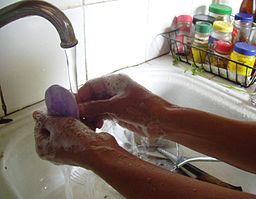New Definition Of Obsessive-Compulsive Disorder
 The definition of obsessive-compulsive disorder (ODC) has recently changed within the field of psychiatry.
The definition of obsessive-compulsive disorder (ODC) has recently changed within the field of psychiatry.
In the new, fifth version of the Diagnostic and Statistical Manual of Mental Disorders (DSM), or DSM-5, published by the American Psychiatric Association, the chapter on anxiety disorders no longer includes OCD. Rather, the DSM-5 has created a new chapter specifically outlining “Obsessive-Compulsive and Related Disorders.”
Why a New Chapter for OCD?
The new chapter reflects increasing evidence that obsessive-compulsive and other disorders are related to one another in terms of diagnostic validators. These other disorders now considered obsessive-compulsive disorders include hoarding disorder, excoriation (skin-picking) disorder, trichotillomania (hair-pulling) disorder, substance- or medication-induced obsessive-compulsive and related disorder, and obsessive-compulsive and related disorder due to another medical condition.
What Is OCD?
More than 2.2 million Americans suffer from OCD, according to the National Institute of Mental health. It is a disorder in which people suffer from persistent, ongoing obsessions that interfere with every day life.
Some people with OCD use what are called “rituals” to control the anxiety that their obsessions produce. For example, if a person is obsessed with germs, the ritual may be the need to wash his or her hands over and over. Other common rituals include the need to touch things in a particular sequence and the need to count things over and over.
While many people have certain rituals they follow, such as checking to see if their car door is locked or clicking the alarm button a few times as they walk away, people with OCD lose control to the point where performing their rituals interferes with daily life.
Sources: American Psychiatric Association and National Institute of Mental Health
 Eating Disorder Self Test. Take the EAT-26 self test to see if you might have eating disorder symptoms that might require professional evaluation. All answers are confidential.
Eating Disorder Self Test. Take the EAT-26 self test to see if you might have eating disorder symptoms that might require professional evaluation. All answers are confidential.